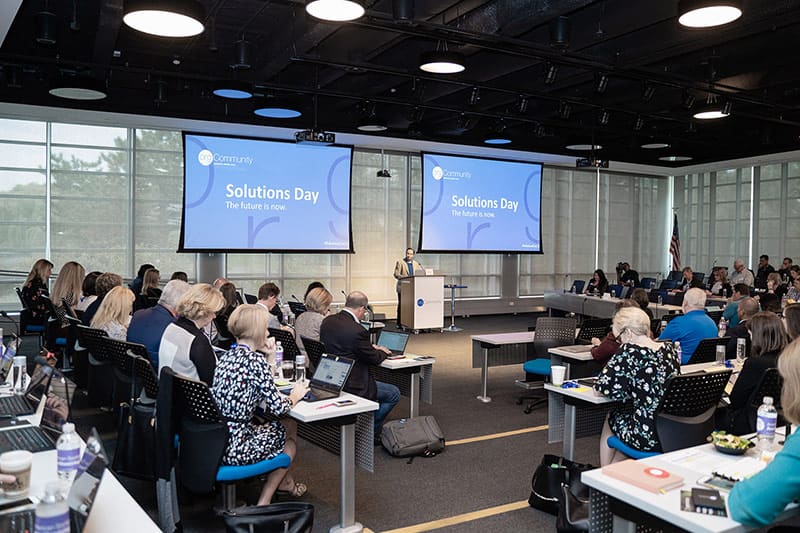
“Set and forget” is a busy professional’s best friend. Automations like scheduled social promotions, email campaigns, and critical calendar reminders are digital conveniences that free space for more important assignments.
If only we could take that casual approach to technology in general. Unfortunately, the head-spinning pace of innovations means that state-of-the-art becomes obsolete in a New York minute. You can set and forget operations, but more strategic considerations need constant attention.
That’s why a technology assessment should be a routine option on your organization’s agenda. A technology assessment is a performance evaluation of your IT systems. You wouldn’t wait several years to get a read on how a new employee is doing, and you shouldn’t defer this important checkup on your digital capacity.
The purpose of an IT assessment is to evaluate whether your systems’ functionality and efficiency are in alignment with organizational goals and strategy. These are some of the KPIs that might be considered:
- Are systems being used to full capacity?
- Do issues and bottlenecks undermine performance?
- Is there missing or superfluous functionality?
- Are reports easy to produce and access?
- Do you collect the data you need?
- Is the data in a format that is easy to use?
- Are systems secure?
- Are users satisfied and engaged?

If you answered yes to each of these practical questions congratulations! But even if your IT systems are crushing their benchmarks, there are additional significant reasons to evaluate your digital status. Kevin Ordonez, .orgSource President and Managing Director of Digital Strategy, explains the benefits of an assessment like this.
“For organizations that aren’t experiencing significant challenges, an assessment can affirm that their systems still meet their needs. It’s also a chance to adjust processes, staff skill sets, and align with the future road maps of your technology partners. The value is in the journey. We uncover hidden problems and opportunities.”
Kevin is right. Technology may be digital, but it needs to function organically. The various systems, your CMS, LMS, and AMS must integrate and grow along with organizational capacity. Plus, platforms must be up to speed with progress both in your industry and in the broader marketplace. A technology assessment can be comprehensive or specifically targeted to one area. Any of the following objectives and concerns might trigger an evaluation.
Launch New Products and Services
Before investing resources in a new initiative, be sure you understand how it will impact your current systems. It’s important to have answers to questions like these:
- Are there security concerns?
- Do you have the processing power to support the number of anticipated users?
- How will you scale operations to accommodate new users as the initiative grows?
- Are there compatibility issues either with your systems or users’ systems?
- What type of customer support is needed?
Looking at your systems from a fresh perspective, you may discover capabilities that you didn’t know existed or you might learn that there are limitations you had not imagined.
Address the Competition
Even associations that were previously immune to competition are experiencing aggressive newcomers entering their markets. Often these competitors are for-profit businesses with the resources to quickly develop user-friendly sites offering attractive products and services.
An assessment can’t eliminate the interlopers, but it can help you keep pace and find the most effective strategies for meeting your members’ needs. The evaluation is an opportunity to explore how your audience is using the tools you provide. You can discover what is missing from their online experience and find pathways to deliver improved value.
Strengthen Problem-Solving
If your group struggles to find the objective information, you need to make challenging decisions, an assessment can be targeted to identify the customized data and analytics that will bring you closer to the right solutions. Digging into the data can help you identify whether the statistics you currently track are advancing your goals or if you need to begin gathering different numbers.

It’s also the right time to ensure that everyone in your organization has access to the information they need to do their best work. Could some staffers benefit from additional training? Are collaboration tools working effectively? I’ve seen projects get tied in knots by the very software that was intended to keep them running smoothly.
Using data to create scenarios and simulations is another powerful problem-solving tool. AI will undoubtedly make those projections more accurate. As this technology becomes widely available, leaders should be ready to incorporate it into their tech stacks.
Promote Innovation
Almost every post I write includes a sentence or two about the importance of innovation. Typically, the focus for invention is on people rather than systems. However, AI has also made everyone acutely aware of technology’s potential for discovery. IT has become more than a facilitator; It is a collaborator in our ability to bring ideas to life.
On the other hand, underperforming systems can be a significant impediment to creativity. When workarounds are needed to complete simple tasks, people limit their thinking to a narrower playing field. An assessment is an opportunity to identify obstacles to productivity and to explore add-ons or new systems that would contribute to fresh thinking.
Increase Member Confidence and Security
In June 2021, data associated with 700 million LinkedIn users was posted for sale on a dark web forum. The hack involved 92 percent of LinkedIn accounts. Stories like this are frequent headlines. As the ability to collect and store data grows, the potential for breaches, improper use, and garden variety mismanagement increases.
Do your members have confidence that their data is safely housed? Remote work adds another dimension of concern around cybersecurity. IT departments have less control over home office systems. Periodic intentional reviews of safety precautions are an important responsibility of being the guardian of member information.
If you have a data governance strategy in place, an assessment is also an opportunity to ensure that policies and procedures are up-to-date. If you don’t have a governance strategy, developing this document should be a priority. Disaster recovery and business continuity are other areas to explore.
Welcome an Outsider’s Point of View
Are you rolling your eyes thinking that your IT department is far too busy to add another project to their to-do list? You are probably right. I strongly recommend engaging outside help to conduct an assessment. A consultant brings the collective experience of many other associations and users to the task. Plus, they typically have extensive knowledge about the opportunities available in the marketplace.
Dawn Briskey, .orgSource Vice President of Client Services, frequently collaborates with Kevin on tech projects. She offers this advice, “Association staff and management are sometimes too close to their systems, processes, and people to clearly see areas for improvement. When .orgSource conducts a tech assessment, whether we evaluate a single area or the entire ecosystem, you benefit from an outside perspective given by association insiders.”
Although you can’t set and forget your IT operations, you can, and should, leave critical assessments of your technology infrastructure to a fresh pair of eyes.
For more information contact Sherry Budziak, CEO at .orgSource, Co-Founder at .orgCommunity.


